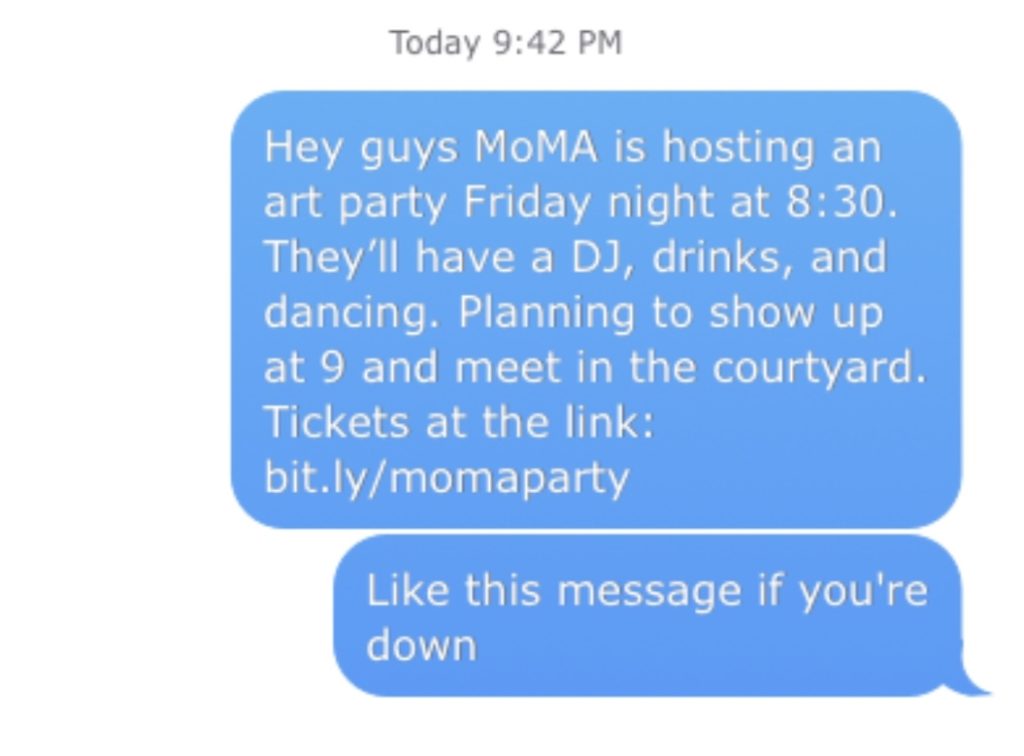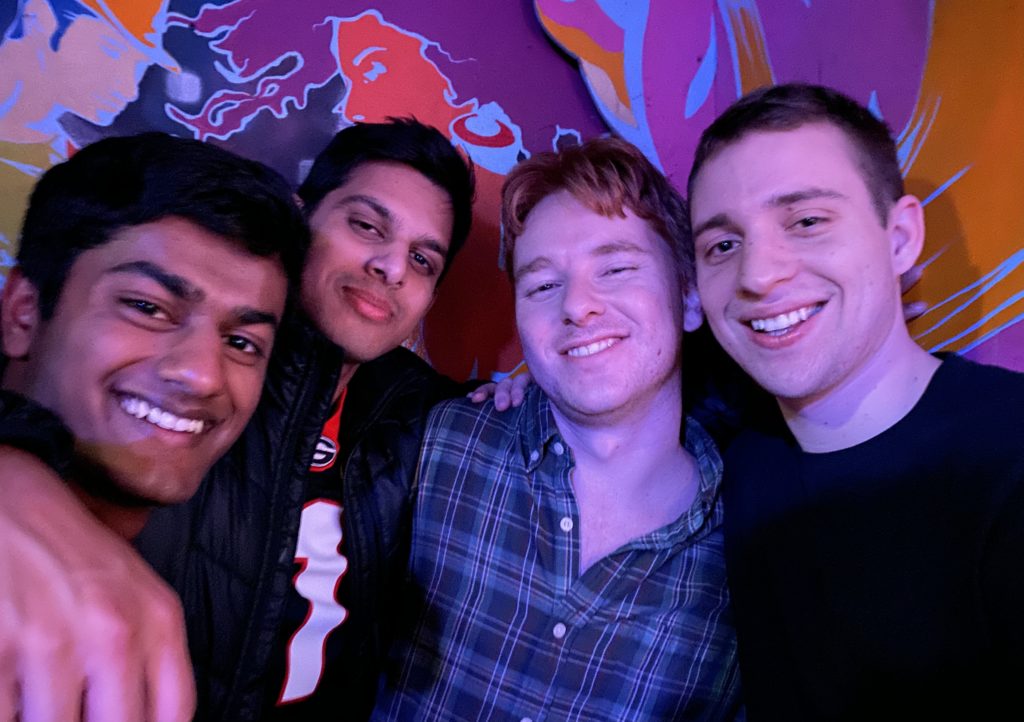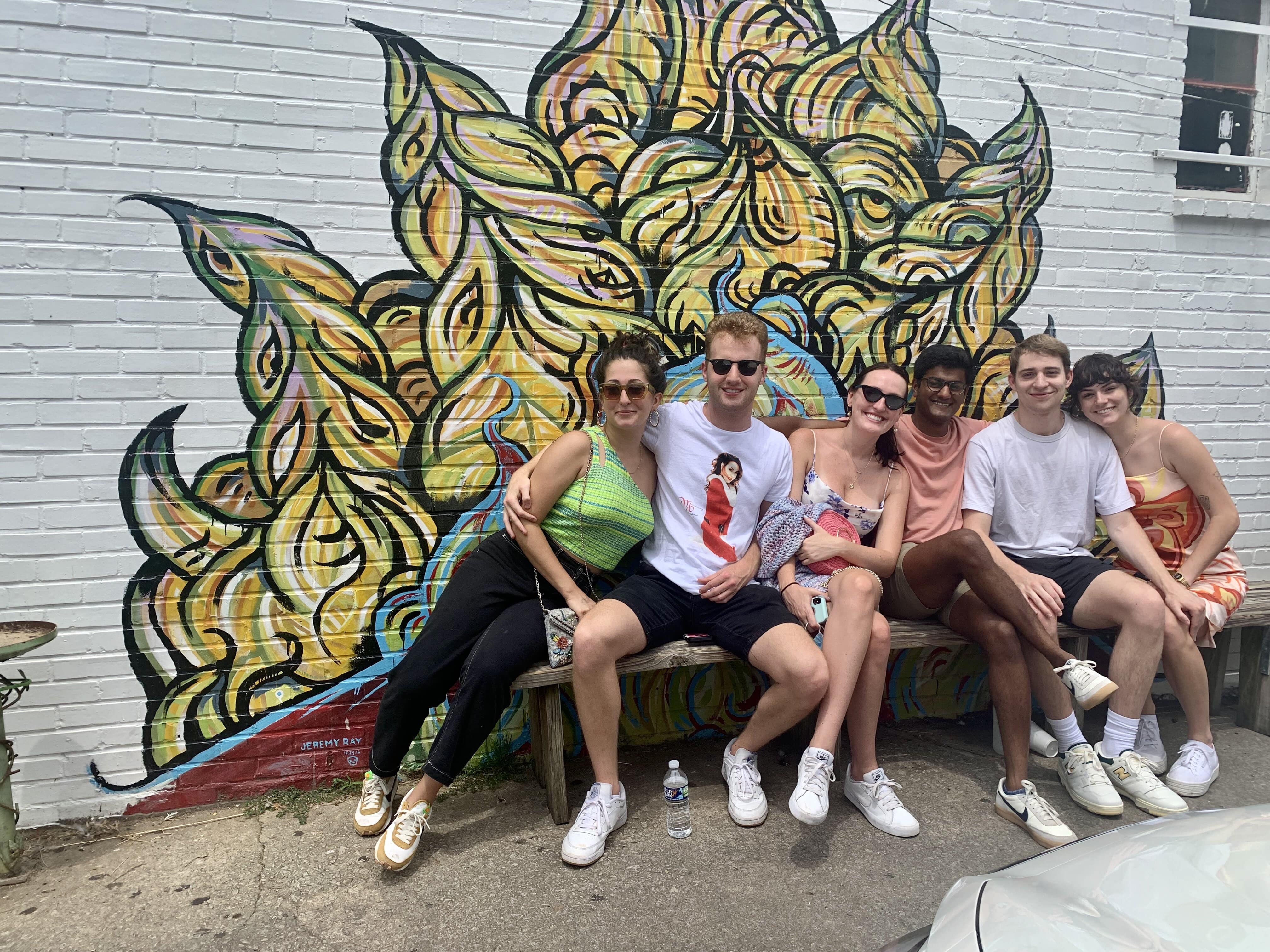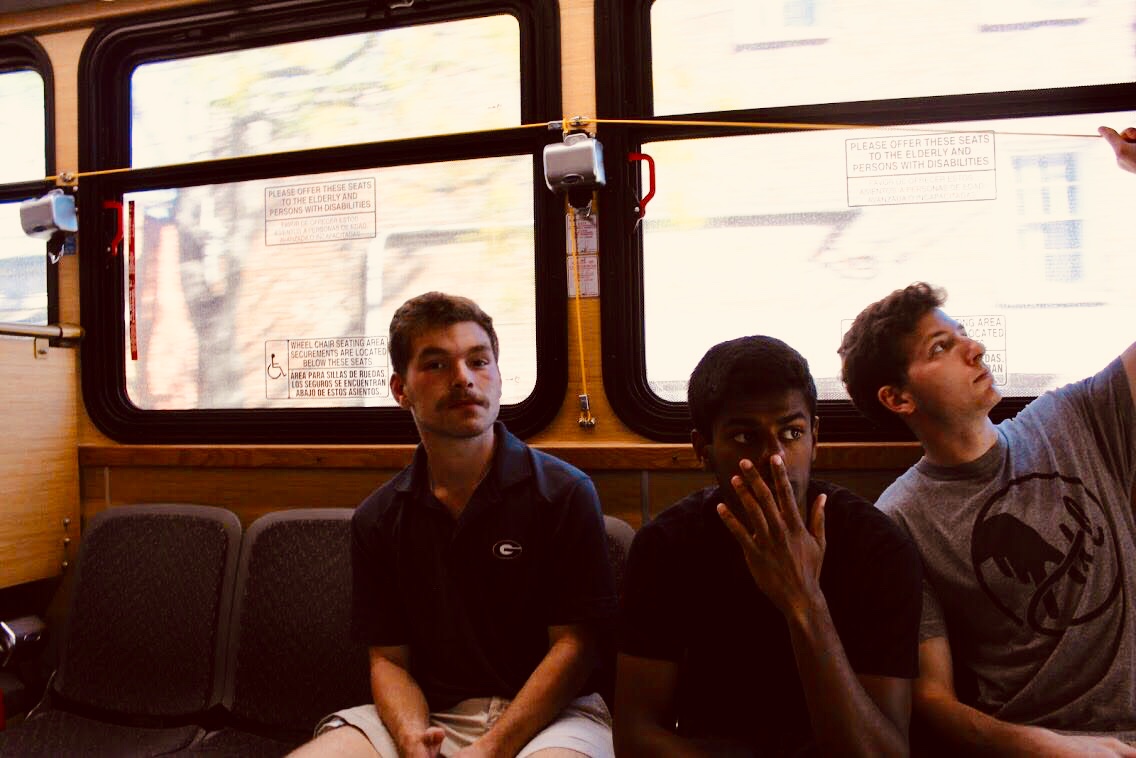Making friends in college is easy. You meet people because you’re all the same age, attend the same university, and share the same campus.
Doing so post-grad is a bit more complex. It can be difficult to make friends at work, especially since many of your co-workers will be older. You have a limited amount of free time so you’ll have to prioritize who you hang out with. On top of this, you can’t rely on the convenient social structure of college to meet cool people your age.
To help overcome these challenges, here’s my framework for getting groups of people together once you’re in the real world:
1. Getting Friends
If you have no friends, get some friends. I won’t exhaust this post on the topic but here’s some solid options for meeting new people:
- Meet friends through friends (e.g. parties, second-degree dinners)
- Hobbies
- Meetups
- Volunteering
- Alumni events
Meeting friends through friends is far and away the best way to build your social circle. These people are already pre-vetted by your friends so you’re much more likely to connect. The same principle applies in every area of human relationships. In sales, “warm” leads are better cold leads. When you’re trying to get a new job, leveraging your existing network will get you more referrals than reaching out to people you’ve never met. When your friends set you up on a date, it’s easier to click since you already have something in common (mutual friends).
The most effective strategy I know for making friends is as follows:
- Meet cool people
- Follow up
- Do cool stuff
This sounds obvious but is rarely practiced. Most people are not going out of their way to make new friends. If this is something you want to improve, you have to consistently implement the above steps. Failure to execute any step in the process will hold you back socially.
The “coolness” of an event or person is determined by one question: does this excite me? Does it excite me to go to this event? Am I excited to hang out with this person?
The most important piece of this process is following up with the people you meet. That means getting their phone number and setting up plans to hangout. If they’re in your phone and you never hit them up, you might as well delete their number. If you haven’t talked to someone in 6 months, you’re not friends. You’re acquaintances. Invest in people you actually want to hang out with.
The underlying principle behind getting new friends is being proactive. You can’t always rely on other people to invite you out but you can control whether you reach out. Hoping people will suddenly see the light and start inviting you to cool, intriguing social events is a plan that’s sure to fail.
2. Find Events in Your Area
If you live in a decent sized city in the US, there’s no excuse to settle for a subpar social life. The internet has made it nearly effortless to find great places and events nearby so take advantage. Treat each event as an adventure in discovering more about your city. We often forget to explore our own cities with the same enthusiasm we have when travelling, but it’s just as fun and potentially more rewarding. If you find a good event, start following the organizer so you can return in the future.
A couple of my favorite places for finding events in Atlanta:
When you’re first hanging out with people, lower stakes events are best. You haven’t built up the social capital to go extravagant yet. Here’s a matrix of ideas for events / activities based on how hard it will be to convince people to join and how much it’ll likely cost you:

For illustrative purposes, I tried to articulate how you can increase your chances of people showing up at your event in a math equation:

Group Hang Success Variables:
- Clarity: how clear are the event details?
- If plans are unclear (i.e. vague details about time, location, who’s there, what to expect), it’s an uphill battle
- Closeness: how close are you to the person you’ve invited?
- The closer you are, the likelier it is you hang out
- e.g. Your best friend of 10 years will be down to meet up on a whim versus a guy you talked to for 10 minutes at a bar
- Distance: how physically far is your invitee from you?
- The farther your invitee is from you, the less likely they are to hang
- e.g. How often do you visit friends out of state?
- Cost: how much does it cost to attend this event (in time / money)?
- Steps: how many steps does the invitee have to take to attend this event?
- If the invitee has to take a lot of action to attend this event (e.g. buy a ticket, wear a suit, get a gift etc.), it can create more resistance to coming out
- Excitement: how attractive is the activity to your friend?
- Inviting your shy, book-worm friend to go clubbing won’t be productive
3. Feeler Texts
Now this part is key. Individually text each of your friends you want there and tell them the details of this event. Too often, group plans are scrambled together at the last minute or fail due to lack of a clear plan. Timing of these texts is critical. You can’t hit people up the night of your event and expect them to drop everything and come. Everyone is busy so give people advanced notice for your event. It’s the considerate thing to do and it’ll increase your turnout. I usually try to send an individual feeler text at least 3 days before the event and then a reminder text the day of.
A note on scheduling events: accommodating for groups with more than 3 people is a fool’s errand. Changing plans to fit everyone’s schedule is a hellish exercise. Tell people when the event is. If they miss it, host something down the line. Someone will always have a reason why they can’t make it.
“You can’t please everyone so you gotta please yourself.”
– Ricky Nelson, “Garden Party”
Send individual feeler texts to your friends with the following details:
- Event name
- Address
- Time (start/end)
- Relevant links / details
Here’s an example:
You’ll start to gather responses from friends. Some will say they can’t or some may not respond at all. Sometimes everyone is unable to make it. But most of the time, at least a few people will respond that they’re interested.
If you hit someone up for your events 3-5 times and they don’t express interest / make alternative plans, you should stop inviting them out. Everyone is busy but if it was important to them, they’d squeeze you into their life. Nobody wants to constantly reject your invites, it feels bad having to dance around the fact that they’re not interested in hanging out with you. Remember your friends can make the effort to reach out as well. This process isn’t about making friends with everybody but finding friends who you actually like and want to hangout with you.
4. Group Text
Once you’ve waited a bit, put those who’ve expressed interest in a group text. Send out a text with details.

This achieves a number of things. First, you’ve given crystal clear details on the event. People have more friction going to events that have vague descriptions or unclear expectations. They want to know who, what, where, when and why (5 Ws). This text answers all of those questions.
Second, you’ve created a group with only those who expressed interest. This 2-pronged approach (sending individual feelers then group texts) is much better than only sending out a mass text.
The downsides of mass texts:
- You’ve lost the personal touch of an individual text
- You’re less likely to get a response
- If many people respond no in the group, this might dissuade those who had interest from coming
Even if everyone doesn’t have each other’s phone numbers, a group text can be helpful. It’s not common for people to want to go to an event with you alone if you’ve recently met. When you only send an individual text, they don’t know if it’s just you two going or how many others to expect. Having a group dynamic puts people at ease and gives them the benefit of meeting / hanging out with others. You already know everyone is down in your group chat. The rest of your friends will feel encouraged when they see others express interest in the chat. We want to get in on things that are already popular or proven, rather than being the first to test it out.
Case in point: https://www.youtube.com/watch?v=gxFt1BZiMTw
If you have an iPhone, the ability to like messages can be a nice feature when gauging your turnout. If you get each person to like a message if they’re going to come to your event, you’ve now got a pretty accurate view into who’s going to come and this will further encourage others to join in. Now you’ve reduced and addressed every point of friction to your invitees.
5. Follow up with Photos
Take photos at your events and send them back to the group text you originally created. It reinforces the great time you had so people will want to do it again. I always enjoy looking back through old memories with friends.


6. Final Thoughts
After all this, why should you make the effort of going through these steps and regularly initiate group plans?
- You’ll become a hub for people and events in your group
- People will start to hit you up for your events
- People will start to hit you up for their events
- People are generally kinder towards hosts / event organizers
- Your social calendar becomes a lot more interesting
Some may find the process I’ve presented to be over-calculated or too much effort. Can’t things happen organically? They definitely can, but I’ve found this method gets people together faster and with less follow-up than a laid back approach. There’s also the added benefit that as the organizer, you get to go to the events / places you wanted to go but now with good company.

Comments
One response to “How to Get Groups Together After College”
10/10 advice. Would absolutely read again. As a visual learner, I really appreciated the “do cool stuff” circle and the equation breakdown. I now have the tools to get more friends. Thank you, King!